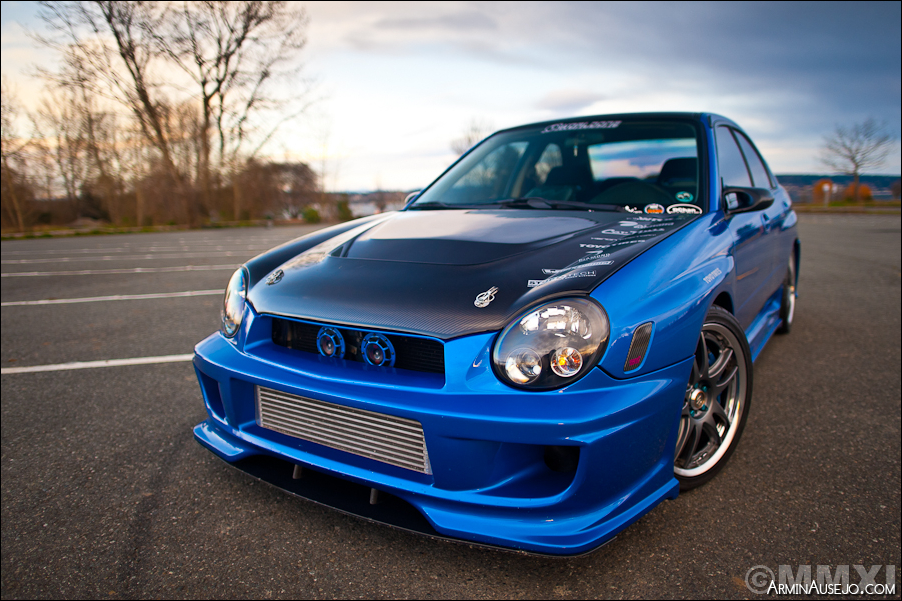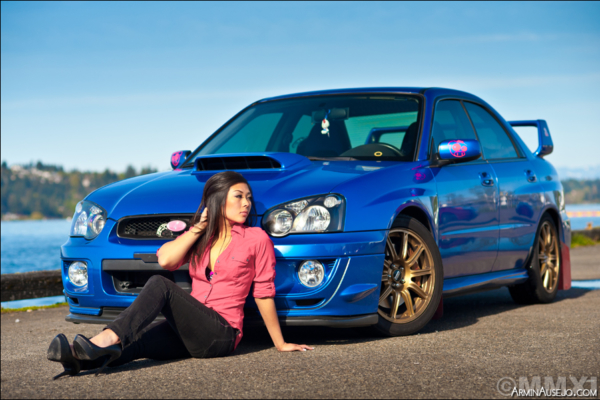Nikkor 24mm f/1.4G and Nikkor 135mm f/2D Review

Since I started using my Nikon D700 last November, I hadn’t really changed my line-up of lenses. My Nikkor 50mm f/1.4D and Nikkor 85mm f/1.8D felt right at home with the new full frame sensor, and the Nikkor 24-70mm f/2.8G satisfied my everyday walk around lens requirement, but none of these lenses really offered anything new to me. On top of that, my first generation Nikkor 70-200mm f/2.8 VR was proven to have some issues with the new FX format sensor, thus Nikon released a new version that fixed these issues. However, the new version turned out to have some focus breathing problems, which left me a little hesitant to just jump right in to the new version despite its other advantages (such as improved vibration reduction). With a dilemma as to what to do next, I figured the best thing I could do is rent a couple lenses from BorrowLenses.com that I’ve had my eye on and see what will fit best for the type of shooting I do. DISCLAIMER: I am by no means a technical expert at lens technology, glass coatings, distortion percentage, or any of the more numbers-based aspects of lens reviewing. The following reviews are all from a practical use perspective, and you’re more than welcome to disagree with my opinions if you have a different experience than I do with these lenses.
Nikkor 24mm f/1.4G
Since I first heard that Nikon was going to release full frame cameras, I was wishing and hoping for a wide angle, fast prime lens to give me plenty of background blur, thus I’ve been drooling over the Nikkor 24mm f/1.4G since it was first announced. Based on my practical use for this lens, I’m happy to say that it’s everything I hoped it would be. Focusing is very fast, the bokeh is super smooth, and it’s constructed like as well as any Nikon pro-level lens I’ve used. It feels very balanced on my D700 with grip and it’s very easy to handle. It does have a tendency to vignette quite a bit when shooting at wide apertures, but that’s a bit to be expected and easily correctable in post-processing. However, in practical use for photographing people and cars, which often involves a little added vignetting in post-processing, this lens’ “natural” vignetting wasn’t bothersome at all. There’s also quite a bit of distortion, but again that can be corrected if necessary. Here are some shots of the lens on my camera:
I really can’t speak any more highly of this lens. It’s everything I thought it was going to be, and even when I knew a photo would turn out well, it would still make me say “wow” out loud. The sharpness even wide open at f/1.4 is quite amazing, and it gets even better as you stop down. The Nano lens coating really did the job well against lens flare (I don’t usually shoot toward light sources though) and the blade design made it so that I didn’t notice any obvious chromatic aberration. The 24mm focal length is definitely wide, and while it’ll definitely make for some great wedding and automotive shots, the wideness does make it a bit more of a specialized lens for my needs. I can see myself really making use of this lens during a wedding ceremony and when covering a wedding reception, or when doing wedding couple portraits, but the wideness wouldn’t be practical for formal group shots. To really take the most advantage from this lens’ capabilities, you really do have to get pretty close to your subject, and for weddings that’s often not a possibility. For example, in the feature photo above of my WRX, the edge of the lens was easily only 6-12 inches from the front bumper of the car. The distortion also prevents this lens from being good for architecture or landscapes, even if you can correct it in post-processing. Nevertheless, I really do want my own copy of this lens, because the results you get from it are just that good. Judge for yourself from these other examples:
Nikkor 135mm f/2D
Deciding which one of these lenses I liked better was not easy, because despite the different uses for each of these lenses, the 135mm f/2D proved to be just as good as the 24mm f/1.4G for many of the same reasons. I was definitely interested in the capabilities of this lens as a replacement for my 70-200mm, so in many ways I was a bit more critical. Although it’s an older lens, the old school Nikon crinkle texture and hefty metal construction is really quite timeless. From this feel alone, this made the lens feel really solid and definitely at pro-level. Compared to the plastic construction of my 50mm and 85mm, this lens definitely felt like it meant serious business. Unlike most lenses, which have a bit of a bezel around the actual glass on the front element, this lens barely had any, which really made it seem like the glass was bold and in your face. The lens uses a rather irregular 72mm filter size and has a built-in hood that slides outward. On the camera, it definitely feels on the heavy side and while I don’t have the exact numbers, it feels heavier than my 24-70mm. This weight could be a problem in some usage, but more on that later. Here are photos of this lens on my D700:
It really isn’t that tall for a telephoto (especially compared to the 70-200mm), but the weight, range, and lack of VR actually proved to be a bit problematic for me in practical use. To get a nice, in-focus, hand-held photo indoors or in relatively low light (such as right after the sun goes down), I often had to raise the ISO up pretty high (ISO 800+) to get a fast enough shutter speed. While I’m quite happy with how my D700 handles noise, I typically shoot with my D300 for telephoto during weddings and motorsports events, so having to really crank up the ISO on it is usually something I try to avoid (that isn’t to say that the D300 is bad at noise handling, just isn’t anywhere as good as the D700). However, when there’s plenty of light, this lens truly shines. The special Defocus Control of the lens was fun to play around with, but unfortunately I didn’t get to do much experimenting with it. Even without adjusting the Defocus Control, this lens produce silky smooth bokeh and some of the sharpest portrait shots I’ve ever taken. It’s so sharp in fact that I honestly don’t believe my venerable 85mm f/1.8 could produce the same sharpness, and I even once said that my 85mm would have to be pried from my dying hands! This lens is really that sharp. See for yourself in these examples:
After all this testing, is the 135mm a viable replacement for my 70-200mm? In terms of sharpness and bokeh, I’d say the 135mm wins, for certain. However, the lack of VR is probably going to make low-light and indoor shoots troublesome, especially if I want to use longer shutter speeds and lower ISO settings. I also noticed in testing that the 135mm creates a lot of chromatic aberration at wide apertures, and while this is again quite fixable in post-processing, it’s still something that I’d rather not have to deal with. Finally, regardless of the new 70-200mm VR-II’s focus breathing issues, I did find that the 135mm was still a bit too short to shoot with full frame, although it probably would be fine on my D300’s crop sensor. Given these criticisms, I believe that the 135mm might be a better replacement for my 85mm rather than my 70-200mm. I very well may just end up with the new version of the 70-200 to suit my specific needs, but that doesn’t mean I don’t want to have the 135mm in my arsenal as well. If you made it this far, thanks for reading, and if you have any questions, please don’t hesitate to leave a comment below. Special thanks again to BorrowLenses.com for the rental and their excellent service!
arminphotodotcom

























